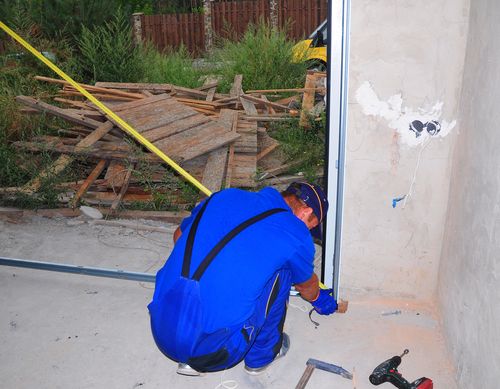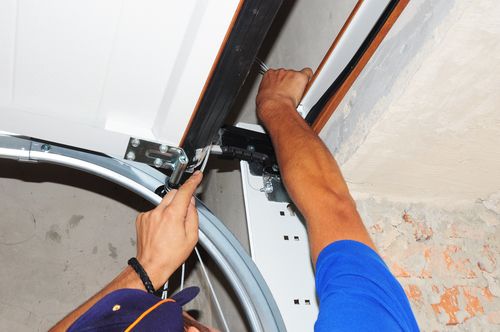
Today’s homeowner knows the importance of energy savings, both for the environment and for their bank account. Without adequate insulation for your garage doors in San Diego, a lot of your energy and money could be going to waste and reducing the comfort in the rest of your home. Many homeowners overlook the garage as a source of energy loss because they spend so little time in it each day. Learning how to insulate garage doors yourself could save you hundreds over the cost of a new garage door if you really don’t need one.
Insulating a Garage Door
Studies show that insulated garage doors can keep the temperature in the garage around twelve degrees warmer during cold weather and around 25 degrees cooler in summer. That difference in temperature could have a big impact on how much your HVAC system runs year round. While the best option with older doors that aren’t in good condition is replacing them, newer doors that are in good working order are easily improved with the addition of insulation.
You have two options for getting the supplies you need. One is to purchase the materials separately online or from your local building supply company. The other is to purchase a kit that contains everything you need to insulate either a single or double garage door. Purchasing a kit makes the job even easier since it will contain the insulation for garage doors, fasteners or tape, and some high-end kits even include the gloves and a utility knife.
If you purchase the materials separately, you need to know which type of garage door insulation will work best for your garage door. Use foam board or reflective insulation for flat doors without panels and attach with glue or tape. For a wood frame or doors with panels, use rigid insulation and place into the recesses between the door frames.
Don’t stop at insulating the garage door. Add weatherproofing to the spaces where walls meet the floor and ceiling and put caulk around door and window facings. Better energy-efficiency comes from a comprehensive approach to stopping air flow in every area of the room.

Mount the Weather Stripping
Step 1: Start at the top of the garage door and tack the weather stripping to the top jamb. Continue in the same manner on the side doorstops. Pressing against the door will tell you how much movement to expect from strong winds. Readjust the doorstop to ensure it seals against the door in really windy conditions.
Once the weather stripping is in place, pound the nails in completely. If you are unable to eliminate the play in the doorstop or light still shines through the stripping, replace the hinges with spring-loaded ones that efficiently press the door against the weather stripping.
Step 2: Check the bottom of your door to see if there is a vinyl seal. Most doors have a bottom seal that cracks or breaks off after years of exposure to the elements. Open the crimps at the ends and slide the old seal out. Replace with a new seal to prevent cold air from entering at the bottom of the door.
Step 3: Lift the door halfway and let it go to see if it remains in place. The weight of the insulation may throw the door off balance. If the door falls, you need to call a professional garage door repair company to replace the springs or to readjust the tension in the existing springs. Leaving the garage door unbalanced can lead to damage and higher repair costs.
Garage Door FAQs
How much does it cost to insulate a garage door?
It costs about $200 to insulate a garage door in comparison to about $1400 for a new door with the same level of insulation. The savings in energy use quickly recoups the cost of the insulation. Learning how to insulate a garage door yourself is also more affordable than hiring a professional garage door repairman in San Diego if the job is a simple one and the door doesn’t require additional repairs.
Do you need to insulate a garage door?
Insulating garage doors helps to keep treated air inside and reduces the amount of energy you use. The benefits depend on your situation and how you use your garage. If you use your garage as an additional room of your house, increasing the comfort is even more important. Keep in mind that the garage door is probably the largest opening in your house and the greatest source of air transfer.
What is the R-Value of a garage door?
The R-Value refers to the doors thermal resistance to heat flow. The R-Value of a garage door is determined by the thickness and chemical properties of the insulation. Basically, the higher the value is, the better the insulating properties.
Garage door insulation is a fairly easy do-it-yourself project. Depending on the condition of your door and how you use your garage, it may be the most cost-effective approach to updating your home’s energy-efficiency. Adding installation to the garage door is an enhancement. It is not a method of updating or repairing a door that is no longer dependable or safe.
The variety of high quality insulated garage doors makes it easy to find the perfect style for any home and budget. Choose from a broad range of doors with different R-Values to get the level of insulation that is right for your specific needs. The right garage door adds beauty and value to your home while also improving the comfort and energy-efficiency indoors.
Garage Door Services in San Diego, California
Contact Coastal Garage Doors for a broad selection of insulated garage doors and experienced installation in San Diego County. Coastal Garage Doors is a leading and trusted provider of garage door repair services in San Diego, California.
If you run into trouble with your garage door insulation project or find that you need other repairs, you can count on us for fast and dependable service. If it’s time for a new door, we have the selection to meet every need. We are your premium garage door professionals for your replacement and repair needs.

